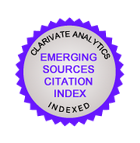Создание аутосексных пород кур для органического птицеводства
https://doi.org/10.29235/1817-7204-2021-59-4-477-487
Аннотация
В последнее время в мире все больше увеличивается спрос на органическую продукцию. Органическое птицеводство требует дополнительных затрат за счет экстенсивного способа содержания птицы, низкой плотности посадки, наличия выгула и других условий производства органической продукции, поэтому создание специализированных пород сегодня особенно актуально. В статье приводится опыт создания аутосексной популяции Ленинградская золотисто-серая (ЛЗС) в биоресурсной коллекции «Генетическая коллекция редких и исчезающих пород кур» ВНИИГРЖ – филиал ФГБНУ ФИЦ ВИЖ им. академика Л. К. Эрнста. Точность сексирования суточных цыплят достигает 98 %. Для создания аутосексной породы кур использовались породы и популяции биоресурсной коллекции, имеющие в генотипе маркерные гены окраски оперения, сцепленные с полом. Для получения статуса породы было проведено полногеномное исследование популяции ЛЗС. Оценка уровня гомозиготности генома показала соответствие среднему уровню, характерному для консолидированных групп. Исследование генетической изменчивости характеризует популяцию ЛЗС как многочисленную. Коэффициент инбридинга у кур ЛЗС находится на безопасном уровне и является следствием интенсивной селекции. В результате создана и апробирована аутосексная популяция ЛЗС, соответствующая условиям для получения статуса породы и позволяющая наилучшим образом удовлетворять повышенным требованиям органического птицеводства. Обоснована целесообразность использования аутосексных пород для органического птицеводства за счет экономии кормов и площадей для выращивания. Принципы создания аутосексной породы из генетического материала генофондных стад могут быть применены в других селекционных программах.
Ключевые слова
Об авторах
А. В. МакароваРоссия
Макарова Александра Владимировна – кандидат сельскохозяйственных наук, научный сотрудник отдела генетики, разведения и сохранения генетических ресурсов сельскохозяйственных птиц
Московское шоссе, 55а, 196601 С.-Петербург – Пушкин
А. Б. Вахрамеев
Россия
Вахрамеев Анатолий Борисович – старший научный сотрудник отдела генетики, разведения и сохранения генетических ресурсов сельскохозяйственных птиц
Московское шоссе, 55а, 196601 С.-Петербург – Пушкин
Н. В. Дементьева
Россия
Дементьева Наталия Викторовна – кандидат биологических наук, ведущий научный сотрудник лаборатории молекулярной генетики
Московское шоссе, 55а, 196601 С.-Петербург – Пушкин
З. Л. Федорова
Россия
Федорова Зоя Леонидовна – кандидат сельскохозяйственных наук, старший научный сотрудник отдела генетики, разведения и сохранения генетических ресурсов сельскохозяйственных птиц
Московское шоссе, 55а, 196601 С.-Петербург – Пушкин
Список литературы
1. Chicken resource population as the source of study genetic improvement of indigenous breeds / N. Dementeva [et al.] // J. of Animal Science. – 2018. – Vol. 96, suppl. 3. – P. 513. https://doi.org/10.1093/jas/sky404.1122
2. Harper, G.C. Consumer perception of organic food production and farm animal welfare / G.C. Harper, A. Makatouni // Brit. Food J. – 2002. – Vol. 104, N 3/4/5. – P. 287–299. https://doi.org/10.1108/00070700210425723
3. Lund, V. Research on animal health and welfare in organic farming – a literature review / V. Lund, B. Algers // Livestock Production Science. – 2003. – Vol. 80, N 1–2. – P. 55–68. https://doi.org/10.1016/S0301-6226(02)00321-4
4. Fanatico, A. Organic poultry production in the United States [Electronic resource] / A. Fanatico ; ATTRA. – US, 2008. – Mode of access: www.attra.ncat.org/attra-pub/pPDF/organicpoultry.pdf. – Date of access: 20.04.2021.
5. Kijlstra, A. Animal health in organic livestock production systems: a review / A. Kijlstra, I.A. J. M. Eijck // NJAS - Wageningen J. of Life Sciences. – 2006. – Vol. 54, N 1. – Р. 77–94. https://doi.org/10.1016/S1573-5214(06)80005-9
6. Lund, V. Natural living – a precondition for animal welfare in organic farming / V. Lund // Livestock Science. – 2006. – Vol. 100, N 2–3. – Р. 71–83. https://doi.org/10.1016/j.livprodsci.2005.08.005
7. Antimicrobial susceptibility of foodborne pathogens in organic or natural production systems: an overview / M.E. Jacob [et al.] // Foodborne Pathogens a. Disease. – 2008. – Vol. 5, N 6. – Р. 721–730. https://doi.org/10.1089/fpd.2008.0095
8. Fanatico, A.C. Organic poultry production in the United States: broilers / A.C. Fanatico, C.M. Owens, J.L. Emmert // J. of Appl. Poultry Research. – 2009. – Vol. 18, N 2. – P. 355–366. https://doi.org/10.3382/japr.2008-00123
9. Reducing foodborne pathogens in organic poultry: challenges and opportunities / K. Arsi [et al.] // Food safety in poultry meat production / ed.: K. Venkitanarayanan, S. Thakur, S.C. Ricke. – Cham, 2019. – P. 25–46. https://doi.org/10.1007/978-3-030-05011-5_2
10. Оценка генетического разнообразия в породах и экспериментальных популяциях кур с помощью ДНК-фингерпринтинга / В.И. Тыщенко [и др.] // С.-х. биология. – 2007. – Т. 42, №4. – С. 29–33.
11. Chromosomal mapping and candidate gene discovery of chicken developmental mutants and genome-wide variation analysis of MHC congenics / E. Robb [et al.] // J. of Heredity. – 2011. – Vol. 102, N 2. – P. 141–156. https://doi.org/10.1093/jhered/esq122
12. Does inbreeding and loss of genetic diversity decrease disease resistance? / D. Spielman [et al.] // Conservation Genetics. – 2004. – Vol. 5, N 4. – P. 439–448. https://doi.org/10.1023/B:COGE.0000041030.76598.cd
13. Population adaptive index: a new method to help measure intraspecific genetic diversity and prioritize populations for conservation / A. Bonin [et al.] // Conservation Biology. – 2007. – Vol. 21, N 3. – P. 697–708. https://doi.org/10.1111/j.1523-1739.2007.00685.x
14. Radwan, J. Does reduced MHC diversity decrease viability of vertebrate populations? / J. Radwan, A. Biedrzycka, W. Babik // Biol. Conservation. – 2010. – Vol. 143, N 3. – P. 537–544. https://doi.org/10.1016/j.biocon.2009.07.026
15. Berg, C. Health and welfare in organic poultry production / C. Berg // Acta Veterinaria Scandinavia. Supplementum. – 2001. – N 95. – P. 37–45. https://doi.org/10.1186/1751-0147-43-S1-S37
16. Gawron, M.F. The use of blue-splashed white down in color sexing crosses / M.F. Gawron, J.R. Smyth // Poultry Science. – 1980. – Vol. 59, N 11. – P. 2369–2372. https://doi.org/10.3382/ps.0592369
17. Association of the slow feathering (K) and an endogenous viral (ev21) gene on the Z chromosome of chickens / L.D. Bacon [et al.] // Poultry Science. – 1988. – Vol. 67, N 2. – P. 191–197. https://doi.org/10.3382/ps.0670191
18. Endogenous viral gene ev21 is not responsible for the expression of late feathering in chickens / A. Takenouchi [et al.] // Poultry Science. – 2018. – Vol. 97, N 2. – P. 403–411. https://doi.org/10.3382/ps/pex345
19. Poultry breeding and genetics / ed. R.D. Crawford. – Amsterdam : Elsevier, 1990. – 1123 р.
20. Jerome, F.N. Auto-sex linkage in Barred Plymouth Rock / F.N. Jerome // Poultry Science. – 1939. – Vol. 18, N 6. – P. 437–440. https://doi.org/10.3382/ps.0180437
21. Sex-linked barring in chickens is controlled by the CDKN2A /B tumour suppressor locus / A.R. Hellström [et al.] // Pigment Cell a. Melanoma Research. – 2010. – Vol. 23, N 4. – P. 521–530. https://doi.org/10.1111/j.1755-148X.2010.00700.x
22. Fowl model for vitiligo: genetic regulation on the fate of the melanocytes / R.R. Bowers [et al.] // Pigment Cell Research. – 1992. – Suppl. 2. – P. 242–248. https://doi.org/10.1111/j.1600-0749.1990.tb00379.x
23. Gluckman, T.-L. The dual function of barred plumage in birds: camouflage and communication / T.-L. Gluckman, G.C. Cardoso // J. of Evolutionary Biology. – 2010. – Vol. 23, N 11. – P. 2501–2506. https://doi.org/10.1111/j.1420-9101.2010.02109.x
24. Topology of feather melanocyte progenitor niche allows complex pigment patterns to emerge / S.J. Lin [et al.] // Science. – 2013. – Vol. 340, N 6139. – P. 1442–1445. https://doi.org/10.1126/science.1230374
25. Fisher, R. The design of experiments / R. Fisher. – Edinburgh : Oliver a. Boyd, 1935. – 252 p.
26. Campo, J.L. Use of the sex-linked barring (B) gene for chick sexing on an eumelanotic columbian background / J.L. Campo // Poultry Science. – 1991. – Vol. 70, N 7. – P. 1469–1473. https://doi.org/10.3382/ps.0701469
27. Dorshorst, B. Genetic mapping of the sex-linked barring gene in the chicken / B. Dorshorst, C. Ashwell // Poultry Science. – 2009. – Vol. 88, N 9. – Р. 1811–1817. https://doi.org/10.3382/ps.2009-00134
28. The evolution of Sex-linked barring alleles in chickens involves both regulatory and coding changes in CDKN2A / D. Schwochow Thalmann [et al.] // PLoS Genetics. – 2017. – Vol. 13, N 4. – P. e1006665. https://doi.org/10.1371/journal.pgen.1006665
29. Genome-wide association analysis identifies potential regulatory genes for eumelanin pigmentation in chicken plumage / L. Yang [et al.] // Animal Genetics. – 2017. – Vol. 48, N 5. – Р. 611–614. https://doi.org/10.1111/age.12573
30. Молекулярно-генетические основы формирования окраски оперения кур / А.В. Макарова [и др.] // Вавилов. журн. генетики и селекции. – 2019. – Т. 23, №3. – С. 343–354. https://doi.org/10.18699/VJ19.499
31. Effect of caponization on performance and quality characteristics of long bones in Polbar chickens / S. Muszyński [et al.] // Poultry Science. – 2017. – Vol. 96, N 2. – P. 491–500. https://doi.org/10.3382/ps/pew301
32. Schmidt, H. Taschenatlas Hühner und Zwerghühner: 182 Rassen für Garten, Haus, Hof und Ausstellung / H. Schmidt, R. Proll. – Stuttgart : Ulmer, 2005. – 191 S.
33. Straight-run vs. sex separate rearing for two broiler genetic lines Part 2: Economic analysis and processing advantages / M.J. Da Costa [et al.] // Poultry Science. – 2017. – Vol. 96, N 7. – P. 2127–2136. https://doi.org/10.3382/ps/pew498
34. Interactive effects of dietary vitamin K3 and Bacillus subtilis PB6 on the growth performance and tibia quality of broiler chickens with sex separate rearing / S. Guo [et al.] // Animal. – 2020. – Vol. 14, N 8. – P. 1610–1618. https://doi.org/10.1017/S1751731120000178
35. PLINK: a tool set for whole-genome association and population-based linkage analyses / S. Purcell [et al.] // The Amer. J. of Human Genetics. – 2007. – Vol. 81, N 3. – P. 559–575. https://doi.org/10.1086/519795
36. Genetic assessment of inbred chicken lines indicates genomic signatures of resistance to Marek’s disease / L. Xu [et al.] // J. of Animal Science a. Biotechnology. – 2018. – Vol. 9, N 1. – Art. 65. https://doi.org/10.1186/s40104-018-0281-x
37. Population genetic analyses of seven Chinese indigenous chicken breeds in a context of global breeds / L. Chen [et al.] // Animal Genetics. – 2019. – Vol. 50, N 1. – P. 82–86. https://doi.org/10.1111/age.12732
38. Identification of selection signatures involved in performance traits in a paternal broiler line / O.A. C. Almeida [et al.] // BMC Genomics. – 2019. – Vol. 20, N 1. – Art. 449. https://doi.org/10.1186/s12864-019-5811-1




































